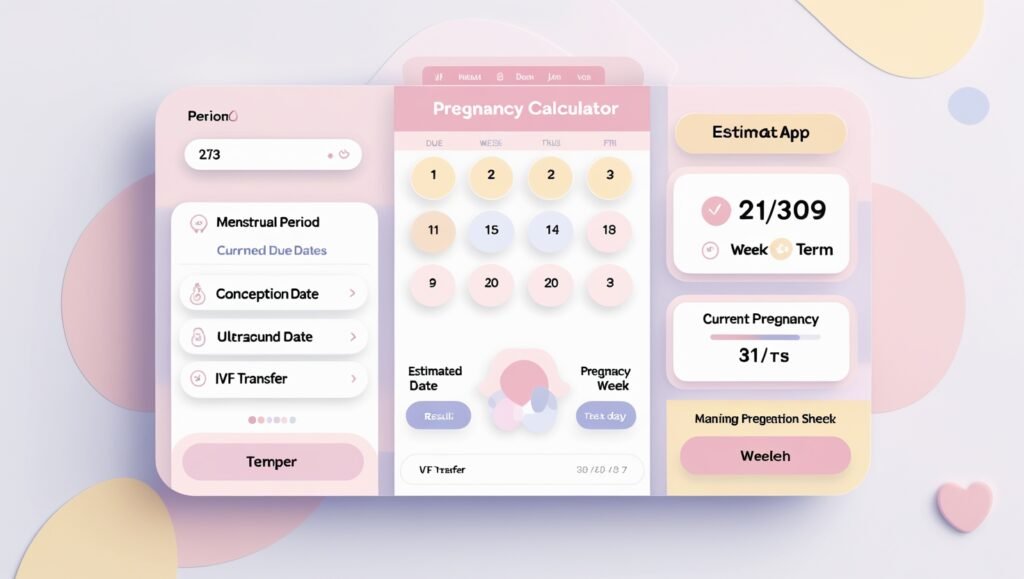
Pregnancy Calculator: Estimate Your Due Date and Current Pregnancy Week
Understanding Pregnancy Duration and Due Dates
Pregnancy is the biological process in which a baby develops inside a woman’s body, typically lasting around nine months. On average, childbirth takes place about 38 weeks after conception—or roughly 40 weeks from the first day of a woman’s last menstrual cycle. According to the World Health Organization, a full-term pregnancy ranges from 37 to 42 weeks.
During an initial visit to an OB-GYN, doctors commonly estimate the due date using ultrasound scans. Alternatively, the last menstrual period (LMP) can also serve as a reference point. However, predicting the exact birth date remains imprecise. While factors like maternal age, weight at birth, and previous pregnancy durations may influence gestation, many aspects behind natural variations are still unclear.
In fact, only about 4% of babies are born exactly on their due date. Around 60% arrive within a week before or after it, and nearly 90% are born within two weeks. So, while the estimated due date offers a useful guideline, the actual delivery day often falls within a broader window.
How Pregnancy is Detected
Pregnancy can be identified through physical symptoms or medical tests. Common early signs include a missed period, fatigue, nausea, frequent urination, and a rise in basal body temperature.
Pregnancy tests detect the presence of hCG (human chorionic gonadotropin), a hormone released after fertilization. Blood tests done in a clinic can spot even trace amounts of hCG as early as 6–8 days after conception and are considered highly accurate. Though they offer precise results, blood tests take longer and are more expensive. Home urine tests are quicker and convenient, and while slightly less sensitive, they’re widely used and generally reliable.
Managing Pregnancy: Key Considerations
Each pregnancy is unique, and proper management involves a range of lifestyle, medical, and nutritional factors. Here’s a closer look at the most important areas:
Medication Safety
Not all medications are safe during pregnancy. The U.S. FDA classifies drugs from Category A (safest) to Category X (high risk to the fetus). It’s crucial for expecting mothers to discuss any prescribed or over-the-counter medications with their doctor before use.
Weight Gain Guidelines
Gaining weight during pregnancy is expected, as it supports the baby’s development, along with the placenta, increased blood volume, and fat stores. However, gaining too little or too much can pose risks like preterm birth, high blood pressure, or the need for a C-section.
The Institute of Medicine recommends:
- 25–35 lbs for women with normal BMI (18.5–24.9)
- 28–40 lbs for underweight women (BMI under 18.5)
- 15–25 lbs for overweight women (BMI 25–29.9)
- 11–20 lbs for obese women (BMI 30 or above)
Exercise During Pregnancy
Physical activity is generally encouraged during pregnancy and can help improve endurance, reduce stress, and even lower the chances of needing a C-section. Women who exercised regularly before pregnancy and have no complications can often continue their routine.
That said, medical advice is essential—any signs like bleeding, dizziness, chest pain, or reduced fetal movement should be checked immediately. Aerobic and strength training are commonly recommended, as long as they’re adjusted to the woman’s condition.
Nutrition for Mom and Baby
A balanced, nutrient-rich diet is essential for both maternal health and fetal development. Pregnant women need more calories, protein, and specific vitamins and minerals.
- Folic acid (Vitamin B9) helps prevent neural tube defects.
- DHA, an omega-3 fatty acid, is vital for brain and eye development but must come from the mother—either during pregnancy or through breast milk.
Diet plans should be tailored individually. There’s a lot of conflicting advice online, so consulting a doctor or registered dietitian is the best way to ensure a healthy pregnancy diet.